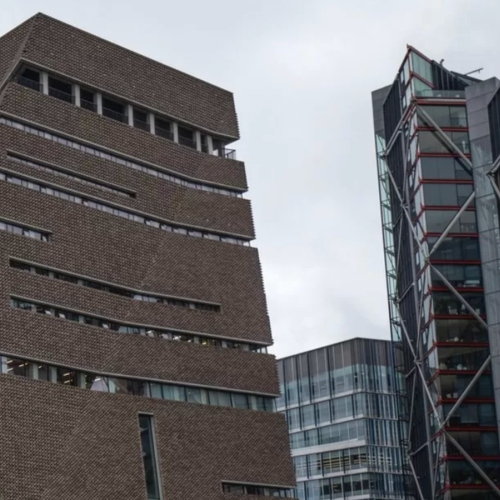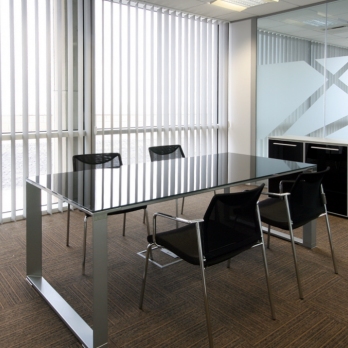We look below at HLS Leisure Ltd v Darville & Son Ltd [2025] in which the High Court decided that the landlord was not liable to one tenant for noise and hygiene nuisance caused by a ventilation ducting system running from premises occupied by another.
Nuisance claims form a staple part of our workload, and this case illustrates some of the additional complexities that arise in a landlord and tenant context.
WolfBite – key takeaways
· A private nuisance is caused by a person doing on their own land something that encroaches on, causes damage to or unduly interferes with the enjoyment of a neighbour’s land.
· The person that causes the nuisance will be liable to their neighbour, and in certain circumstances their landlord might be liable as well or instead.
· In HLS v Darville & Son, a ventilation system that served a fast-food takeaway tenant’s premises was noisy and leaked grease into a loading bay area that customers of another tenant had to use to get to its premises.
· The ventilation system was found to have caused a nuisance, but the central question was whether the landlord was liable for the nuisance.
· The court found that the landlord was not liable because the ventilation system formed part of the takeaway tenant’s premises and the landlord had not otherwise directly or actively participated in the nuisance.
Landlord’s liability for a tenant’s nuisance
A private nuisance arises when a person does something on their land that substantially or unreasonably interferes with a neighbour’s property rights, such as encroaching on, causing direct property damage to, or interfering with the use and enjoyment of a neighbour’s land.
The general position is that it is the occupier of land who causes a nuisance that is liable for that nuisance.
Ordinarily, therefore, if the occupier is a tenant, and it is the tenant that causes a nuisance, then it will be the tenant, not its landlord, who is liable to the neighbour.
There are, however, circumstances in which a landlord might still be held responsible, such as where the landlord has expressly or impliedly authorised the actions that caused the nuisance. In this type of situation, potentially both the landlord and the tenant might be liable.
Where a nuisance arises after a lease has been granted, the landlord could still be found to be liable if it “directly” or “actively” participated in the nuisance. It will not, however, be found to have participated in the nuisance simply because it does nothing to stop or discourage the particular tenant from causing the nuisance. There needs to be something more.
Some previous cases suggest that landlords might still be liable for a nuisance caused by a tenant where the nuisance occurs on the common parts, which the landlord is in possession and control of.
What was the issue in HLS v Darville & Son?
Darville & Son owned a large mix-used building in Windsor. It was the landlord to a number of residential and commercial tenants.
HLS was one of the commercial tenants. It had been in occupation for a long time, its first lease having been granted in 2001 which was subsequently renewed for a 10-year term in 2017. It operated a gentlemen’s club from its premises, the entrance to which was through a covered loading bay area to the side of the building. Under its lease, the loading bay area formed part of the common parts for which the landlord was responsible.
In 2016, Darville & Son granted a 20-year lease of a ground floor unit in the same building, to Gourmet Grill. Gourmet Grill operated a fast-food takeaway from its premises. A kitchen extract system had been fitted that ran from the takeaway premises and then, via newly installed ventilation ducting, through the loading bay where it terminated.
At some point, which the judgment does not reveal, Darville & Son forfeited HLS’s lease seemingly for non-payment of rent. It is unclear whether HLS sought to restore its lease by seeking relief from forfeiture, but what it did do was make a claim against Darville & Son for damages for nuisance.
HLS argued that the ventilation ducting was unacceptably noisy and had leaked grease into the loading bay area. This, it said, had created an uncomfortable environment for its customers and staff and had resulted in a loss of profit. It claimed that Darville & Son, as its landlord, was liable for the losses that it had suffered.
The court agreed that the noise from the ventilation ducting and the leaking grease constituted a nuisance in law.
The question was, however, whether the landlord was liable to HLS for the nuisance.
HLS argued that the ducting was not part of the premises let to Gourmet Grill but formed part of the common parts. It said that the landlord was therefore liable directly in nuisance because it was the occupier or manager of the common parts.
Both the trial Judge and High Court Judge on appeal found that the landlord was not liable.
The decisions turn on the particular wording of Gourmet Grill’s lease.
Both Judges considered that the definition of the “Property” in Gourmet Grill’s lease included fixtures attached to its takeaway shop. This was whether they were originally fixed and fastened or added later, and even if only part of the fixture might be within the takeaway unit itself with other parts extending outside.
In this case, both Judges considered that the ventilation ducting was a single system that started in the kitchen of Gourmet Grill’s takeaway unit and formed part of its demise even though the remainder of the ducting stretched into the loading bay area. The whole of the ducting system therefore formed part of the premises demised by its lease.
The definition of the “Property” in the lease contained an exception, such that any fixtures installed by the tenant would not form part of the demise if they could be removed without defacing the land. On this point, the appeal Judge found that the trial Judge had been justified in finding that the exception did not apply, both because removing the ducting would leave a large whole in the wall of the loading bay and because removing the rest of the single kitchen extract system would deface the takeaway unit. This fixture could not, therefore, be removed without defacing the land.
The upshot was that both Judges did not consider that the ventilation ducting formed part of the common parts for which the landlord was otherwise responsible. Rather, the ducting was part of the property let to Gourmet Grill.
As such, the landlord could only be liable if there was evidence of active or direct participation in the nuisance, and there was no such evidence. Indeed, the trial Judge considered that Gourmet Grill had installed the extraction system and had likely run it through the loading bay without seeking formal consent from the landlord.
Accordingly, Gourmet Grill was responsible for the nuisance, not the landlord.
Why is HLS v Darville of interest?
The wording of the particular lease was not as clear as it could have been, and the court’s interpretation of the “Property” arguably resulted in a lucky escape for the landlord in this case.
The ultimate outcome is, however, broadly consistent with previous judgments in finding that, in the absence of evidence showing direct or active involvement, it may be difficult to successfully argue that a landlord should be held liable where it is their tenant that actually caused the nuisance.
It is not clear from the judgment whether HLS attempted to take action directly against Gourmet Grill, and nor are we told if it might now do so. It is not, however, unusual for tenants to try to get the landlord to take enforcement action in order to avoid having to go head-to-head against a fellow tenant themselves (some leases even include a specific mechanism that provides for this). This case highlights that, in some cases, there may be little option other than to pursue directly the tenant that is actually causing the nuisance.
Perhaps this situation could also have been avoided.
It should, for example, have been clear to the landlord that Gourmet Grill would need to vent fumes, smoke, gasses etc away from the kitchen, and this would ordinarily have been dealt with in a licence for works/alterations when granting the lease. If this had happened, this might have resulted in greater thought being given to the route of the ducting, the specification of the ventilation system to minimise the risk of noise, and appropriate provisions being built-in governing repair, maintenance and enforcement.
We do not know whether attempts were made to resolve matters outside of court, but there might have been alternative ways to address the noise and leaks that could have been explored too, for example, through negotiations or a formal mediation.
Disagreements are bound to arise when people live, and businesses work, side-by-side, where one neighbour may object to how another is using their land. Advising on such disputes forms a regular part of our workload and issues involving ventilation systems from restaurants and takeaway shops are not uncommon.
We are very experienced in advising on a wide range of nuisance claims between neighbours, such as noise nuisance; spread of Japanese knotweed; encroaching tree roots and branches; escape of water, noxious fumes or smells; collapsed walls and other structures; and damage caused by vibrations from nearby development schemes.
Speak to a solicitor
If you, or one of your clients, have concerns over a similar claim. Please contact one of our solicitors at hello@hagenwolf.co.uk.





